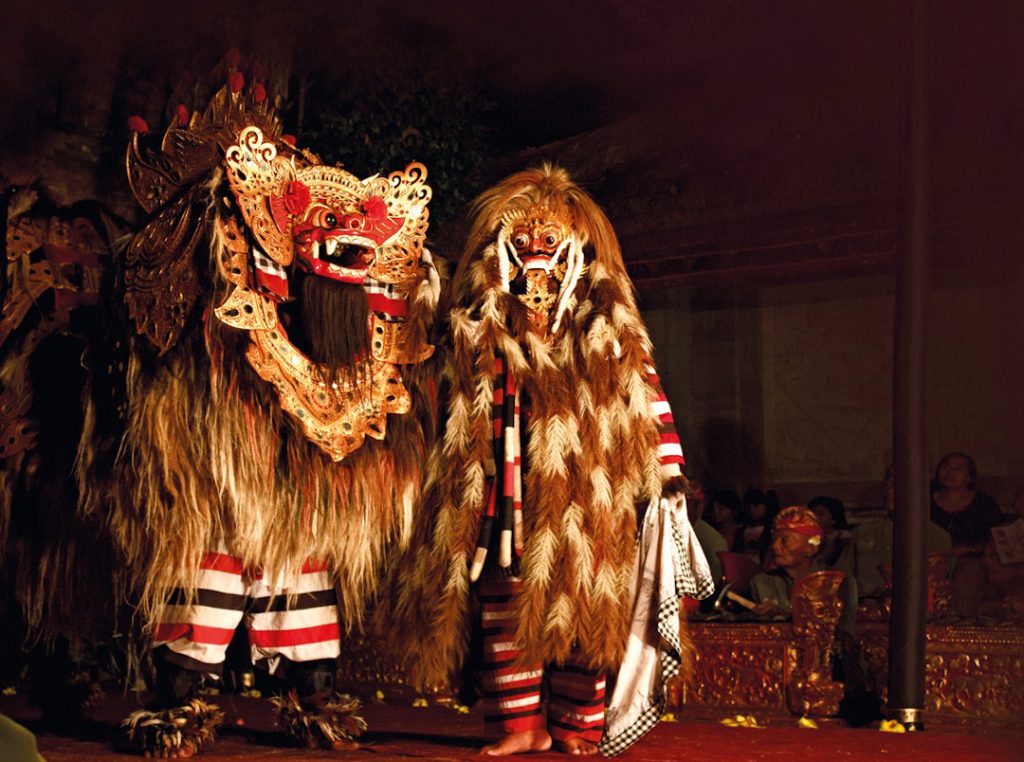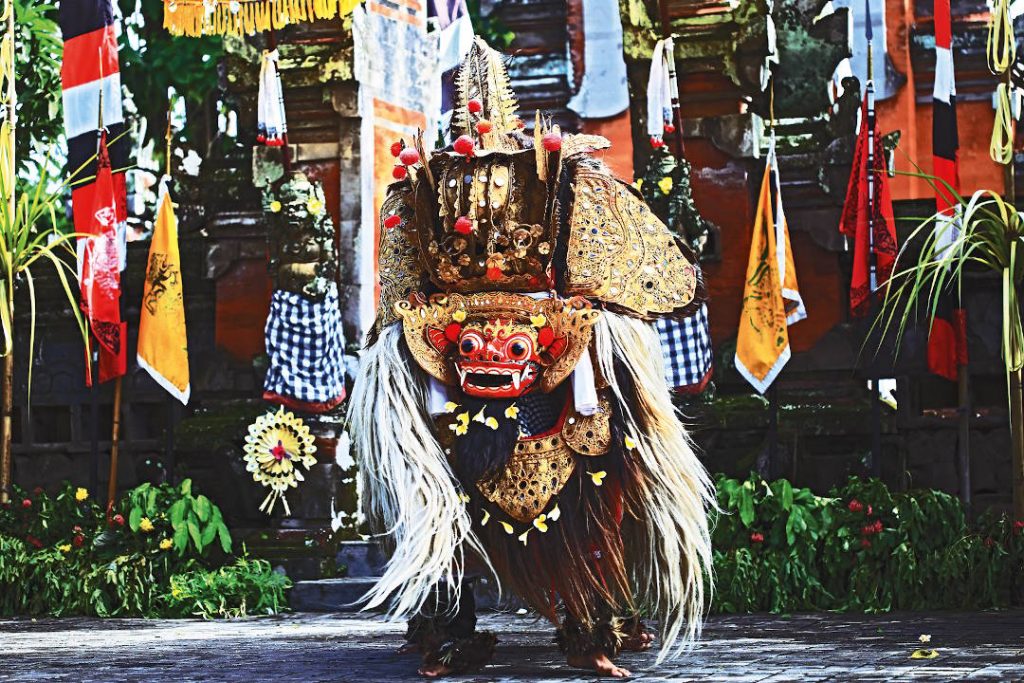The Balinese believe that we were born with suka duka lara pati, which means that in life we go through happiness and sadness, and at the end death is absolute. This duality of life is like two sides of a coin, they are inseparable. There is also a strong belief that light will eventually come even in the darkest time. However, humans also need darkness to see the light, just like sadness must exist so that happiness can be appreciated. This philosophy of Rwa Bhineda is written in the manuscript of Ramayana, and is also delivered through a Barong and Rangda performance.

The Barong dance is not merely a creation of art. It is filled with philosophy and imbued with Balinese Hindu belief and religious rituals. For example, the Barong puppet itself is controlled by two dancers, one at the head the other at the tail. This is symbolic of the different part, mind and body, having to move together in harmony, putting their differences aside to cooperate.
The characters of Barong and Rangda are symbols of suka duka, light and darkness, and all the duality in life. Some temples, usually the Pura Dalem temple found in the cemeteries keep the Barong and Rangda inside as ‘pratima’, objects that are sanctified and used as tools to worship God; Barong as the embodiment of Lord Shiva while Rangda as the embodiment of Goddess Durga.
However the title Rangda is not used to refer to the pratima, in worship she is referred to as Ratu Ayu. On stage, the character of a raging widow and witch is called Rangda, whilst Ratu Ayu is the protector, said to cleanse negative spirits and auras. Ratu Ayu and the Barong are brought to life through a series of sacred rituals that begin from the moment the materials are collected to create the mask and entire costume. And only a chosen one, picked by higher forces, can wear the and dance with these costumes on.
The concept of Barong and Rangda are almost identical to the concept of Samkhya in Hinduism. Samkhya, in its simplest form, is a concept that explains that every effect exists due to a cause. The Barong and Rangda show delivers this concept through the story of Calonarang, a mythological story passed down through the generations, be it through the written, oral or performance mediums.
The story is about a lady with a beautiful daughter who lives in Girah, a village part of the Daha kingdom. Her name was Calon Arang and her daughter was Ratna Manggali. Despite her beauty, Ratna didn’t receive any marriage proposals, this was because the villages looked down at Calon Arang who was left by her husband. Holding a grudge, Calon Arang read her holy book and went to meditate on the grave of Baradah’s wife, thus summoning the goddess Durga whom bestowed upon her supernatural powers.

Every night, Calon Arang would complete a ritual. She would wash her hair in blood and wear the intestines of the deceased as jewellery. She would then transform, with her supernatural powers, into the form of Rangda, a demon witch. She and her apprentice would parade through the villages, spreading disease and pestilence.
The troops of Daha Kingdom then rose against the raging Rangda, only to be bewitched, stabbing their own chests instead of stabbing the supernatural being. The troops were then supported by Mpu Baradah, taking the form of Barong, who battles against Rangda too.
Unlike your usual Hollywood movie, neither Rangda nor Barong wins the battle in this story. This is to symbolise the Shivaist theological concept of Rwa Bhineda, two opposite that are required to bring balance to the world. The enlightenment of oneself is required before erasing darkness in others.
With the growth of tourism in Bali, the Barong and Rangda performance can be seen islandwide on stages built for entertainment – especially in the Batubulan and Waribang areas. However, no matter the reason for performance, the story it tells shall always have a strong philosophical root.









